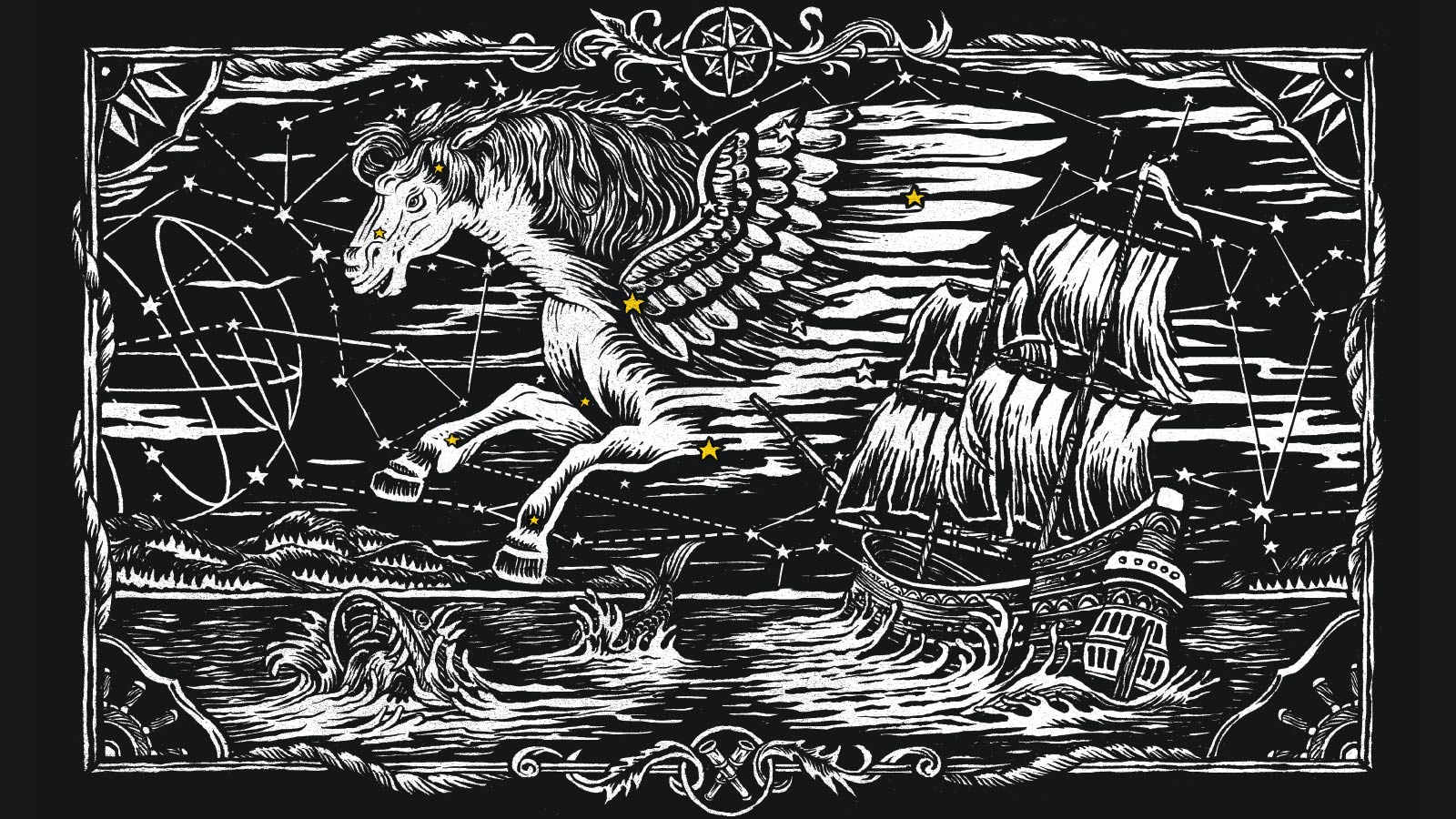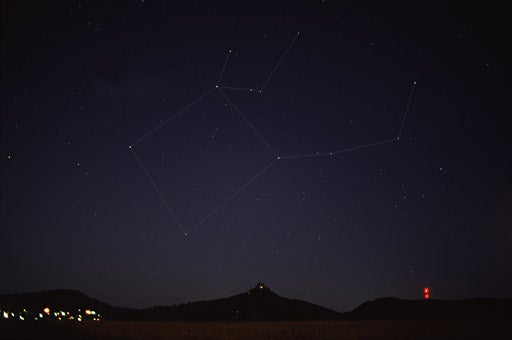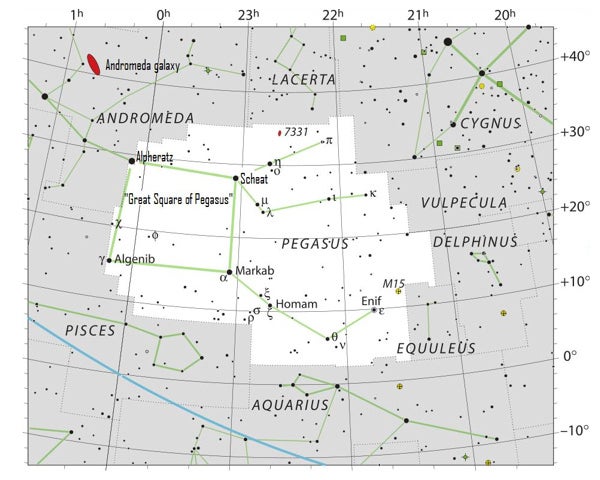
Written in the Stars
Summer 2016 | By Paige Wilson
Pegasus as seen by the naked eye The Great Square of Pegasus makes up the eastern (left) half of the constellation Pegasus. 

We know the constellation above isn’t accurate, but we didn’t feel right turning our beloved winged horse upside down. To the right is how you’d see the constellation in the night sky and below are 10 facts about Pegasus and its Great Square.
1.
The son of Poseidon, Pegasus is the winged, white horse, who at birth sprang from Medusa’s neck when she was beheaded by Perseus.
2.
The word Pegasus is believed to be related to the Greek words pegai or pege, meaning a spring, and the Greek pegazo, meaning spring forth.
3.
Pegasus caused springs to flow as he struck the Earth and Mount Helicon with his hoof.
4.
According to Greek mythology, Pegasus carries the thunderbolts of Zeus, the god of the sky and thunder.
5.
Inside our beloved Pegasus constellation are four stars that gallop into view around the September equinox to create the Great Square of Pegasus.
6.
The Great Square of Pegasus serves as a guide to the evening sky during certain times of the year:
Early July – dawn
Early August – 3 a.m.*
Early September – 1 a.m.*
Early October – 11 p.m.*
Late October – 10 p.m.*
Early November – 8 p.m.
Late November – 7 p.m.
* = Daylight Saving Time
7.
Four stars of nearly equal brightness make up the Great Square of Pegasus: Scheat, Alpheratz, Markab and Algenib.
8.
Steps to find the Great Square of Pegasus:
- Use the Big Dipper to star-hop to Polaris, the North Star.
- Then, by drawing an imaginary line from any Big Dipper handle star through Polaris, and doubling the distance, you’ll land on the W or M-shaped constellation Cassiopeia.
- A line from Polaris through the Caph star in the Cassiopeia constellation then takes you to the Great Square of Pegasus.
9.
The Great Square is used much like the Big Dipper — to find other astronomical wonders, including the Andromeda Galaxy, which is the nearest major galaxy to our own Milky Way.
10.
Also like the Big Dipper, the Great Square of Pegasus is an asterism, meaning it’s a pattern of stars inside an existing constellation.